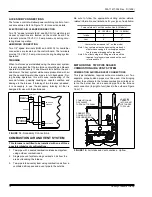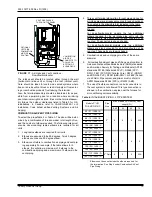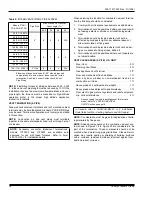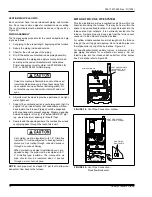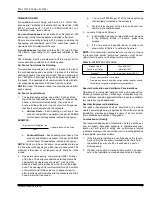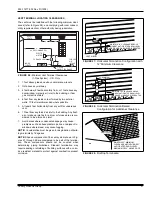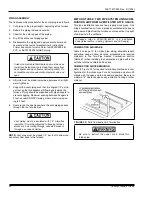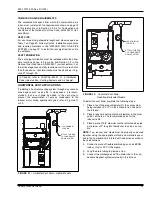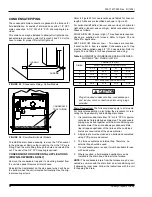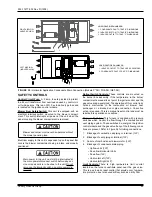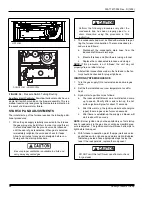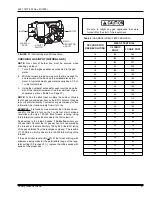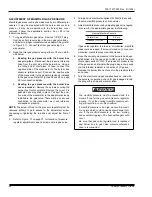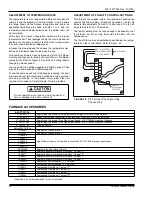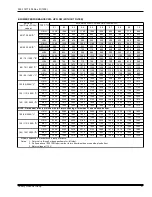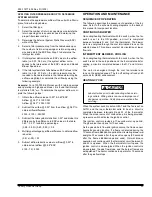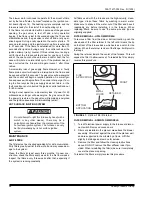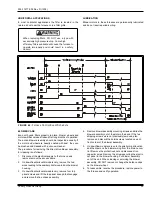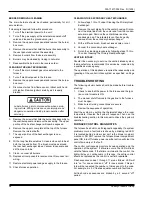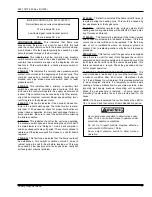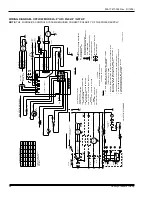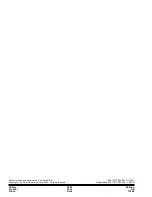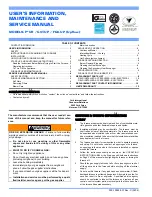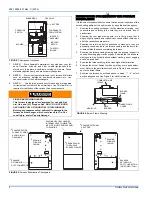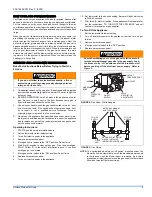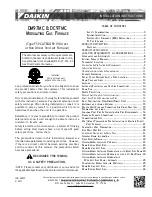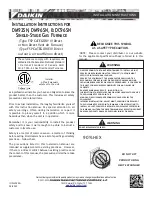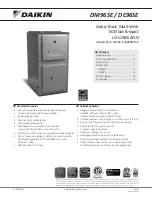
035-17477-002 Rev. D (1202)
28
Unitary Products Group
ADJUSTMENT OF MANIFOLD GAS PRESSURE
Manifold gas pressure may be measured by two different pro-
cedures. It may be measured with the burner box cover in
place or it may be measured with the burner box cover
removed. Follow the appropriate section, 2a or 2b in the
instructions below.
1.
Turn gas off at main gas valve. Remove 1/8" NPT plug
from the outlet pressure tap in the main gas valve body
and install a proper manometer tube adapter fitting (refer
to Figure 37). Connect line from gas valve tap to a
manometer.
2.
Read the inlet gas pressure using either of the two meth-
ods below.
a.
Reading the gas pressure with the burner box
cover in place
- Disconnect the pressure reference
hose from the right side of the burner box. Using a
tee fitting and a short piece of hose, connect the
negative side of the manometer to the burner box
pressure reference port. Connect the positive side
of the manometer to the adapter previously installed
in the gas valve Refer to Figures 38 and 39 on page
29 for connection details.
b.
Reading the gas pressure with the burner box
cover removed
- Remove the screws securing the
burner box front cover plate. Remove the cover. It is
gasketed and may stick in place. Connect the posi-
tive side of the manometer to the adapter previously
installed in the gas valve. There will be no second
connection to the manometer as it will reference
atmospheric pressure.
NOTE:
The screw-off cap for the pressure regulator must be
removed entirely to gain access to the adjustment screw.
Loosening or tightening the cap does not adjust the flow of
gas.
3.
Refer to Figure 37 on page 27, for location of pressure
regulator adjustment cap and screw on main gas valve.
4.
Turn gas and electrical supplies ON. Start furnace and
observe manifold pressure on manometer.
5.
Adjust manifold pressure by adjusting gas valve regula-
tor screw for the appropriate gas per the following:
If gas valve regulator is turned in, or clockwise, manifold
pressure is increased. If screw is turned out, or counter-
clockwise, manifold pressure will decrease.
6.
Once the correct gas pressure to the burners has been
established, turn the gas valve to OFF and turn the elec-
trical supply switch to OFF; then remove th pressure tap
at the gas valve and reinstall the plug, using a compound
(on the threads) resistant to teh action of LP gases.
Replace the burner box front cover or the pressure refer-
ence hose.
7.
Turn the electrical and gas supplies back on, and with
the burners in operation, check for gas leakage around
the plug with a soap and water solution.
Nominal Manifold Pressure
Natural Gas
3.5” w.c.
Propane (LP) Gas
10.0” w.c.
The manifold pressure must be checked with the
screw-off cap for the gas valve pressure regulator
in place. If not, the nominal manifold pressure set-
ting will result in an over-fire condition.
If manifold pressure is too high, an over-fire condi-
tion exists which could cause heat exchanger fail-
ure. If the manifold pressure is too low, sooting
and eventual clogging of the heat exchanger could
occur.
Be sure that gas valve regulator cap is replaced
and burner box to gas valve pressure reference
hose is reconnected.

